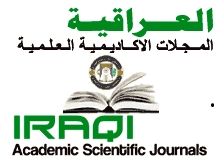A Comparative Analysis of Machine Learning Models for Predicting Thyroid Disorders in Type 1 and Type 2 Diabetic Patients
DOI:
https://doi.org/10.56714/bjrs.50.2.16Keywords:
Thyroid Disorder Prediction, Type 1 Diabetes, Type 2 Diabetes, Machine Learning, Feature Importance, Random Forest, Imbalanced Data Handling, Random Under-SamplingAbstract
Machine learning (ML) is increasingly indispensable in modern medicine, particularly for disease prediction and improving patient outcomes. This study applies ML techniques to predict thyroid disorders in diabetic patients, a critical task given the frequent co-occurrence and complex interplay between these conditions. six ML classifiers namely Random Forest (RF), Decision Tree (DT), K-Nearest Neighbors (KNN), Support Vector Machine (SVM), Logistic Regression (LR), and Naive Bayes (NB) were evaluated across three experiments on a local dataset: (1) a balanced dataset using Random Under-Sampling (RUS), (2) a subset of Type 2 diabetes (T2D) patients, and (3) a subset of Type 1 diabetes (T1D) patients. Random Forest classifier consistently outperformed other classifiers, achieving the highest accuracy (0.85) and F1-score (0.83) in the T2D-focused dataset and showing robust performance on the balanced dataset using RUS. These results highlight the suitability of Random Forest for deployment in clinical settings and underscore the importance of balancing techniques like RUS in improving predictive accuracy. However, challenges remain in predicting thyroid disorders among T1D patients due to the low prevalence of thyroid disorders in this group. The findings reinforce the potential of ML in advancing diagnostics and personalized care in diabetic populations.
Downloads
References
D. Sisodia and D. S. Sisodia, “Prediction of Diabetes using Classification Algorithms,” Procedia Computer Science, vol. 132, pp. 1578–1585, 2018, Doi: https://doi.org/10.1016/j.procs.2018.05.122.
I. D. Penman, S. Ralston, M. W. J. Strachan, and R. P. Hobson, Davidson’s principles and practice of medicine, 24th Edition. [Edinburgh]: Elsevier, 2023.
R. Kumar, P. Saha, S. Sahana, Yogendra Kumar, A. Dubey, and O. Prakash, “A Review On Diabetes Mellitus: Type1 & Type2,” World Journal of Pharmacy and Pharmaceutical Sciences, vol. 9, no. 10, pp. 838–850, Aug. 2020, Doi: https://doi.org/10.20959/wjpps202010-17336.
S. A. Hassan, A.-K. M. Ali, and R. I. Saleem, “Relationship between glycemic control and different insulin regimens in pediatric type 1 diabetes mellitus,” The Medical Journal of Basrah University, 2023, Doi: https://doi.org/10.33762/mjbu.2023.140990.1138.
S. U. Ogbonna and I. U. Ezeani, “Risk Factors of Thyroid Dysfunction in Patients With Type 2 Diabetes Mellitus,” Frontiers in Endocrinology, vol. 10, Jul. 2019, Doi: https://doi.org/10.3389/fendo.2019.00440.
H. M. Almahshi, E. A. Almasri, H. Alquran, W. A. Mustafa, and A. Alkhayyat, “Hypothyroidism Prediction and Detection Using Machine Learning,” 2022 5th International Conference on Engineering Technology and its Applications (IICETA), May 2022, pp. 159–163. Doi: https://doi.org/10.1109/iiceta54559.2022.9888736.
P. Sharma, S. Shrestha, and P. Kumar, “A review on association between diabetes and thyroid disease,” Santosh University Journal of Health Sciences, vol. 5, no. 2, pp. 50–55, Jan. 2020, Doi: http://doi.org/10.18231/j.sujhs.2019.013.
B. Biondi, G. J. Kahaly, and R. P. Robertson, “Thyroid Dysfunction and Diabetes Mellitus: Two Closely Associated Disorders,” Endocrine Reviews, vol. 40, no. 3, pp. 789–824, Jan. 2019, Doi: https://doi.org/10.1210/er.2018-00163.
H. Y. Abdulrazaq, I. A. Zaboon, and M. A. Maatook, “Prevalence of thyroid disorders among diabetes mellitus patients in al-Basra southern of Iraq,” Annals of Tropical Medicine and Public Health, vol. 24, no. 04, 2021. Available: https://www.researchgate.net/profile/Ibraheem Abood/publication/352135204_Abdulrazaq_et_al_2021_Prevalence_of_thyroid_disorder_among_diabetes_mellitus_patients_C_Annals_of_Tropical_Medicine_Public_Health_Prevalence_of_thyroid_disorders_among_diabetes_mellitus_patients_in_al/links/60ba801392851cb13d7984a7/Abdulrazaq-et-al-2021-Prevalence-of-thyroid-disorder-among-diabetes-mellitus-patients-C-Annals-of-Tropical-Medicine-Public-Health-Prevalence-of-thyroid-disorders-among-diabetes-mellitus-patients-in.pdf .
S. Kalra, S. Aggarwal, and D. Khandelwal, “Thyroid Dysfunction and Type 2 Diabetes Mellitus: Screening Strategies and Implications for Management,” Diabetes Therapy, vol. 10, no. 6, pp. 2035–2044, Oct. 2019, Doi: https://doi.org/10.1007/s13300-019-00700-4.
F. Rong et al., “Association between thyroid dysfunction and type 2 diabetes: a meta-analysis of prospective observational studies,” BMC Medicine, vol. 19, no. 1, Oct. 2021, Doi: https://doi.org/10.1186/s12916-021-02121-2.
A. M. Posonia, S. Vigneshwari and D. J. Rani, "Machine Learning based Diabetes Prediction using Decision Tree J48," 2020 3rd International Conference on Intelligent Sustainable Systems (ICISS), Thoothukudi, India, 2020, pp. 498-502, Doi: https://doi.org/10.1109/ICISS49785.2020.9316001.
K. Dharmarajan, K. Balasree, A.S. Arunachalam, and K. Abirmai, “Thyroid Disease Classification Using Decision Tree and SVM,” Indian Journal of Public Health Research & Development, vol. 11, no. 03, pp. 229, Mar. 2020. Available: https://www.researchgate.net/publication/341742234_Thyroid_Disease_Classification_Using_Decision_Tree_and_SVM .
A. S. Hassan, I. Malaserene, and A. A. Leema, “Diabetes Mellitus Prediction using Classification Techniques,” International Journal of Innovative Technology and Exploring Engineering, vol. 9, no. 5, pp. 2080–2084, Mar. 2020, Doi: https://doi.org/10.35940/ijitee.e2692.039520.
P. Duggal and S. Shukla, "Prediction Of Thyroid Disorders Using Advanced Machine Learning Techniques," 2020 10th International Conference on Cloud Computing, Data Science & Engineering (Confluence), Noida, India, 2020, pp. 670-675, Doi: https://doi.org/10.1109/Confluence47617.2020.9058102.
C. Yadav and S. Pal, “Prediction of thyroid disease using decision tree ensemble method,” Human-Intelligent Systems Integration, vol. 2, no. 1–4, pp. 89–95, Apr. 2020, Doi: https://doi.org/10.1007/s42454-020-00006-y.
G. Chaubey, D. Bisen, S. Arjaria, and V. Yadav, “Thyroid Disease Prediction Using Machine Learning Approaches,” National Academy Science Letters, vol. 44, no. 3, pp. 233–238, May 2020, Doi: https://doi.org/10.1007/s40009-020-00979-z.
B. A. C. Permana, R. Ahmad, H. Bahtiar, A. Sudianto, and I. Gunawan, “Classification of diabetes disease using decision tree algorithm (C4.5),” Journal of Physics: Conference Series, vol. 1869, no. 1, p. 012082, Apr. 2021, Doi: https://doi.org/10.1088/1742-6596/1869/1/012082.
Dudkina, I. Meniailov, K. Bazilevych, S. Krivtsov, and A. Tkachenko, “Classification and Prediction of Diabetes Disease using Decision Tree Method,” Symposium on Information Technologies & Applied Sciences, Bratislava, Slovakia , Mar. 2021. Available: https://ceur-ws.org/Vol-2824/paper16.pdf
S. Poudel, “A Study of Disease Diagnosis Using Machine Learning,” Medical Sciences Forum, vol. 10, no. 1, p. 8, Feb. 2022, Doi: https://doi.org/10.3390/iech2022-12311.
R. Chaganti, F. Rustam, I. De La Torre Díez, J. L. V. Mazón, C. L. Rodríguez, and I. Ashraf, “Thyroid Disease Prediction Using Selective Features and Machine Learning Techniques,” Cancers, vol. 14, no. 16, p. 3914, Aug. 2022, Doi: https://doi.org/10.3390/cancers14163914.
I. Tasin, T. U. Nabil, S. Islam, and R. Khan, “Diabetes prediction using machine learning and explainable AI techniques,” Healthcare Technology Letters, Dec. 2022, Doi: https://doi.org/10.1049/htl2.12039.

Downloads
Published
Issue
Section
License
Copyright (c) 2024 Basrah Researches Sciences

This work is licensed under a Creative Commons Attribution 4.0 International License.







